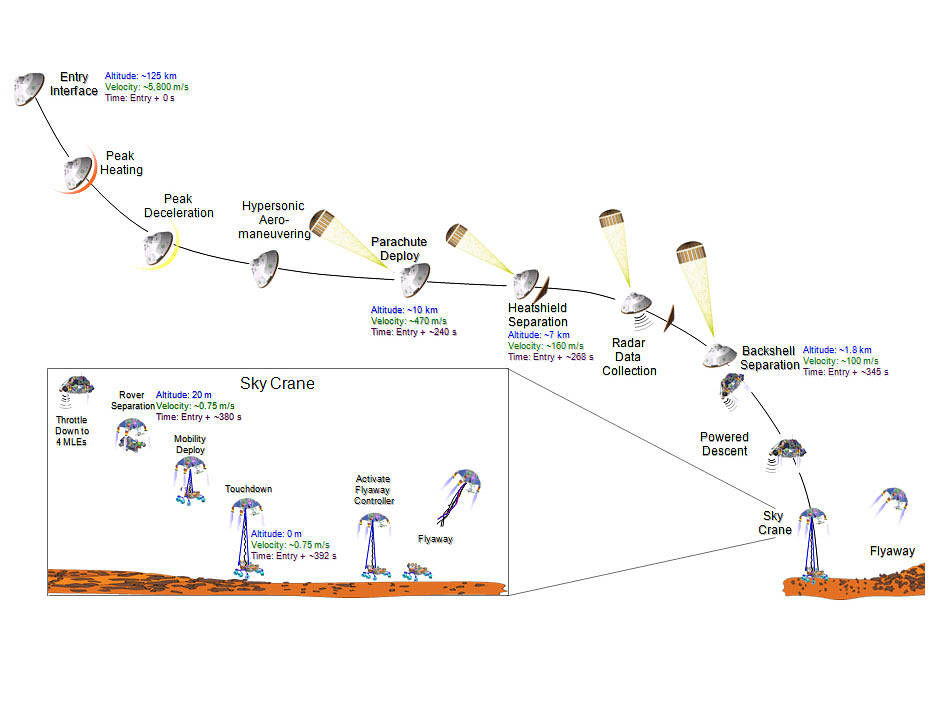This graphic portrays the sequence of key events in August 2012 from the time the NASA’s Mars Science Laboratory spacecraft, with its rover Curiosity, enters the Martian atmosphere to a moment after it touches down on the surface.
The Mars Descent Imager (MARDI) camera on the rover will provide high-definition video of the descent, looking downward, beginning at the time of heat shield separation. An engineering experiment, the Mars Science Laboratory Entry, Descent and Landing Instrument (MEDLI), will measure atmospheric conditions and the performance of the heat shield on the way down.
The values indicated in this graphic are an example case. The actual timing and altitudes for these events may differ due to differences among the candidate landing sites and unpredictable factors in atmospheric conditions on landing day. For example, the touchdown is indicated in the chart as about 392 seconds after atmospheric entry, but it could be as long as about 480 seconds after entry, depending on which landing site is selected. Also, even for a given site, times for the opening of the parachute could vary by 10 to 15 seconds for a successful landing.
Enclosed inside the capsule formed by the back shell and heat shield, the craft enters the atmosphere at an altitude of about 125 kilometers (78 miles) and a velocity of about 5,800 meters per second (about 13,000 miles per hour).
The parachute deploys about 240 seconds later at an altitude of about 10 kilometers (about 6 miles) and a velocity of about 470 meters per second (about 1,050 miles per hour). After about 28 more seconds, the heat shield separates and drops away at an altitude of about 7 kilometers (about 4 miles) and a velocity of about 160 meters per second (about 360 miles per hour). The rover, with its descent-stage “rocket backpack,” is still attached to the back shell on the parachute. The radar on the descent stage begins collecting data about velocity and altitude.
The back shell, with parachute attached, separates from the descent stage and rover about 77 seconds after heat shield separation, about 1.8 kilometers (1.1 miles) above the ground and still rushing toward the ground at about 100 meters per second (about 225 miles per hour). All eight throttleable retrorockets on the descent stage, called Mars landing engines (MLE’s), begin firing for the powered descent phase.
Four of the eight engines shut off just before nylon cords begin to spool out to lower the rover from the descent stage for the “sky crane” landing. The rover separates from the descent stage, though still attached by the sky crane bridle, at an altitude of about 20 meters (about 66 feet), with about 12 seconds to go before touchdown. The rover’s wheels and suspension system, which double as the landing gear, pop into place just before touchdown at about 0.75 meters per second (about 1.7 miles per hour). When the spacecraft senses touchdown, the connecting cords are severed and the descent stage flies out of the way.
Image credit: NASA/JPL-Caltech
3 min read




























